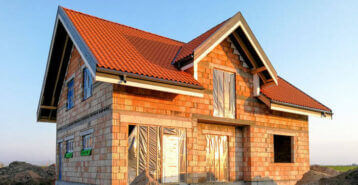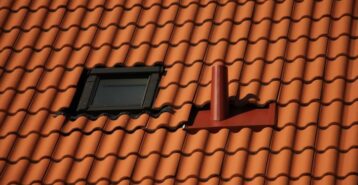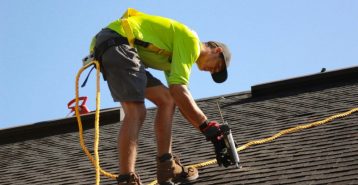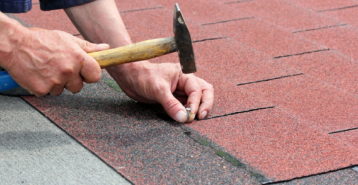Did you know that your roof does much more than just protect you from the weather? Roof ventilation systems help circulate air throughout your home, protect it from moisture build-up, vent exhaust from your heating units, and keep the air quality in your home safe and healthy. Roof ridge vents are one solution that can you achieve efficient ventilation. On this page, you can learn more about ridge vents, their purpose, and how much it would cost to have it installed on your roof.
What is a Roof Ridge Vent?
A roof ridge vent is a type of home ventilation system that is installed along the long, narrow peak of a roof, and covered with a protective hood to prevent water from entering your home. At the same time, a roof ridge vent will allow hot air and moisture to escape the upper levels of your home efficiently to regulate temperature, improve air quality, avoid mold, and even protect your home from water damage.
Every home needs a proper ventilation system. Ridge vents are so popular among homeowners today because they are affordable and easy to install, require little maintenance, and blend in well with the natural appearance of your roof line.
Is a Roof Ridge Vent Right for Your Home?
Not every roof needs a ridge vent, but your roofer might recommend installing one, especially if you have an older home with attic gable vents. Many contractors feel that attic gable vents are no longer an effective ventilation system, so they will often recommend supplementing them with a ridge vent system.
Ridge vents tend to work best with gable roofs, and can sometimes work well with flat roofs. However, most roofing experts will recommend ridge vents for sloped roofs. The roof’s angle creates a natural draft, which helps air escape easily through the attic of upper levels of the home.
If your roof’s slope has a low pitch, or many peaks and valleys, your roof might not be a good candidate for a roof ridge vent system. It’s important to consult with a professional roofing contractor to see if a roof ridge vent installation would work well for your home’s structure.
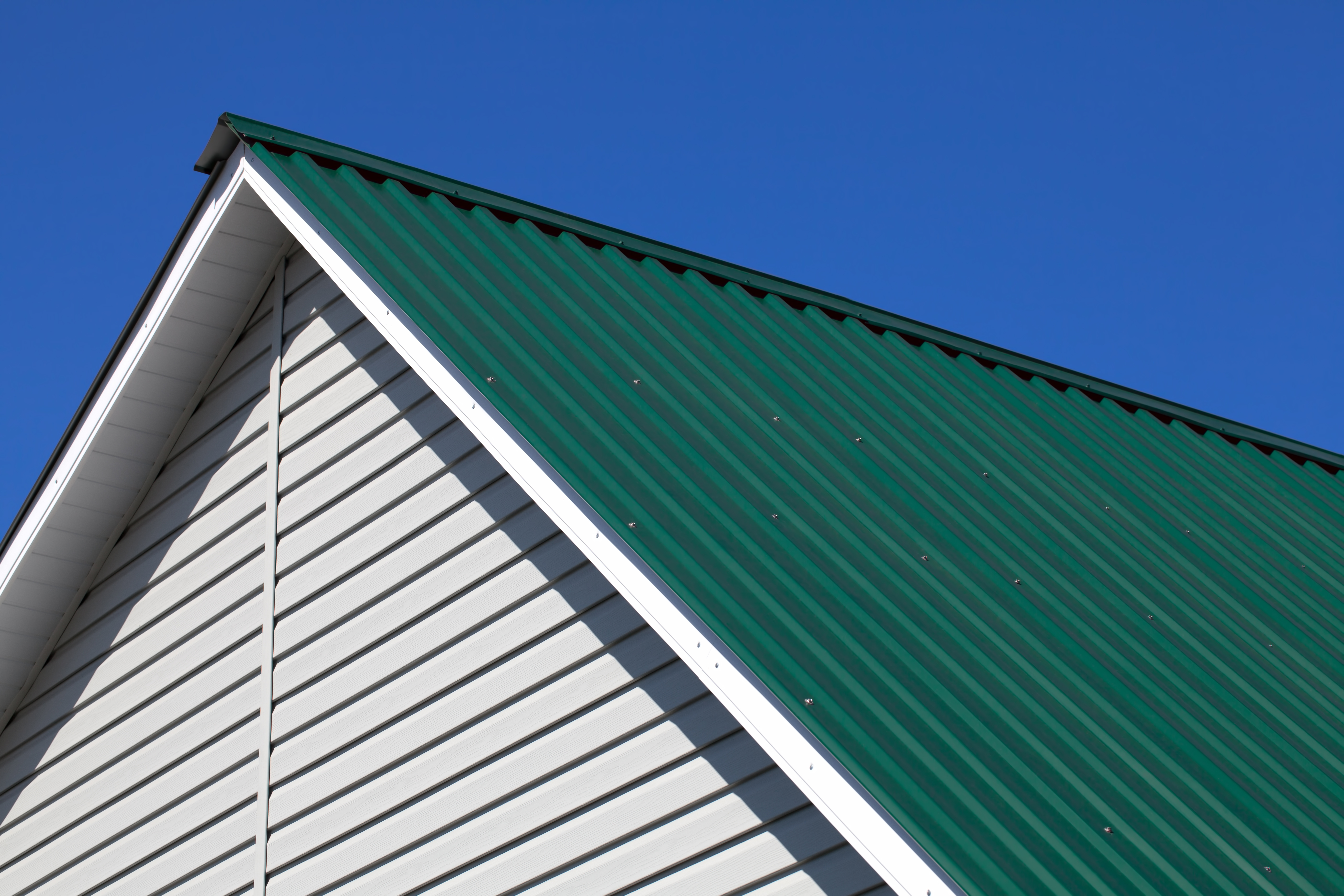
Keep in mind that adding a ridge vent to a roof typically comes up during a full roof installation. The contractor can roll the ridge vent installation into the total cost for the roof replacement project. If this is the case, you may get a deal since you are already buying a new roof from them. In the least, you will likely save on labor if you have both parts installed together.
How Much Does it Cost to Install a Roof Ridge Vent?
If you are already pursuing a roofing project, you may not want to add to the thousands you are already spending. But how much more will it cost? Typically, a roof ridge vent installation does not cost that much at all. Roof vent systems are a small expense compared to the cost to replace a roof. They might add a few hundred dollars to your project at the most.
Installing a roof ridge vent without touching the rest of the roof will cost about $400 on the low end and up to $725 on the high end. Materials cost between $200 to $325, and professional installation can cost between $100 and $400, depending on the complexity of the labor required. The total cost of the project can also depend on the type and size of the ridge vent. Generally, you can expect to pay between $2 and $4 per linear foot of ventilation system installed, and about $70 per hour for installation.
Keep in mind that prices may vary according to your location based on the material costs and competition for labor in those areas.
What Factors Can Affect Ridge Vent Installation Costs?
Like any home roofing project, several factors can influence the total cost. These are the most common variables to expect:
- Length of your roof. For example, roofers will need to spend more on materials for an exceptionally long ridge. Longer ridges may also require additional installation time.
- Roof style. Some roof styles contain multiple elevations, meaning there are actually two ridges that need to be vented.
- Existing gable vents. If you have gable vents, your roofer may recommend blocking them to promote circulation.
- Removing an existing ridge vent. If you are replacing an existing ventilation system, demolition costs will be factored in. This may also require a shingle replacement.
- Higher pitched roofs. Your roofer may charge more to get the work done if the roof isn’t walkable.
- Other necessary repairs. If your proessional roofer detects damaged shingles, rotten decking or other problems, the cost to repair will be added in.
Newly discovered problems are unpleasant, but getting them handled is better than a roof leak or collapse. Many roofing companies will negotiate financing or payment plans to cover the cost of unexpected repairs.
Additional Roof Ventilation System Options
Of course, roof ridge vents are not your only option when it comes to ventilation systems. Different ventilation systems work best for specific roof styles. Other than ridge vents, you might also consider the following ventilation systems for your roof:
- Gable vents. This ventilation system is installed on the side of the roof, and are usually used in combination with other types of vents.
- Soffit vents. These vents are installed under the eaves of the roof. Like gable vents and ridge vents, they are often installed in combination with other types of vents.
- Turbine vents. These vents use wind to pull hot air out of the attic and out through the roof.
- Static vents. Opposite of turbine vents, these do not move while still allowing hot air to escape the attic. They are usually installed on the sides of the home.
- Power vents. These exhaust fans are installed on the roof or gable and are powered by electricity. Be sure to ask your contractor about additional energy costs associated with this type of ventilation system.
Remember, the best vent system for your roof depends largely on the climate in your area, the type of roof you have, the size of your attic, and more.

Hiring a Roofing Professional
While it is possible to DIY a roof ridge vent installation, it is not recommended if you do not have expertise. Considering the low cost of a ridge vent installation, it typically makes the most sense to hire a professional to handle this project safely and affordably – especially considering additional repairs and shingle replacements may need to be done in the process. When it comes time to begin your roofing project, Modernize has a network of top roofing professionals in the U.S. who can bring your plans to life.
Compare top-rated roofing pros in your area.
Read real homeowner reviews, explore qualifications, and view promotions. Modernize makes it easy to browse professionals and find one that will be perfect for your project.






